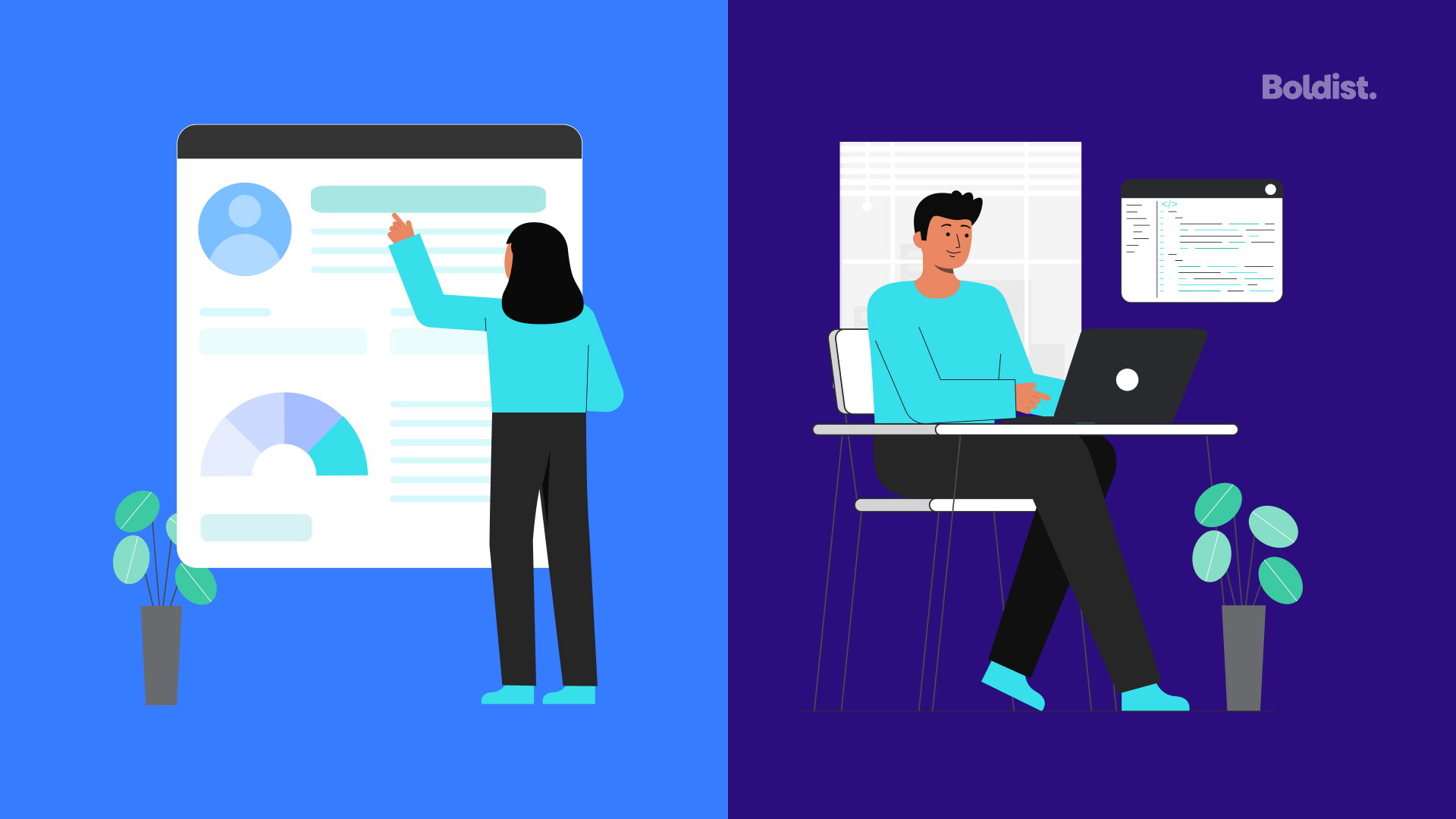If you’re new to building websites, it can be eye-opening to see how many specialties go into making a great website. When we work with clients who are new to building websites or are still looking for someone to build their website, we often find that they don’t distinguish between a website designer and a website developer. Both are important, and they rely on collaboration and communication between each other, but their roles, responsibilities, and talents differ drastically.
Web design refers to your website’s visual appearance, a creative endeavor that attracts graphic designers and those with a keen eye for design and detail. Web developers take that design and make it a functioning website using some form of programming language – such as HTML, CSS, Javascript, PHP.
They have different skill sets that, when used together, make websites aesthetically pleasing, fast, and functional. Many technical functions go into creating a great website (development), but your website’s feel and usability (design) create great user experience to accomplish your business goals. You want experts in both, working together on their independent specialties, to achieve the holistic pursuit of a website that meets your business needs.
Role of a Web Designer
Depending on whether you’re building a new site from scratch or adding new landing pages to an existing site, a web designer will design your web pages’ templates and blueprints. Skilled in graphic design and working in a program like Adobe XD, they will create something visual for the client to approve that resembles what will be published on their website.
Web designers need an excellent technical grasp on a website’s functionality and will be skilled at crafting sensible information architecture alongside their developer to build an interface that looks awesome and works how it is intended to.
They will be responsible for the layout, typography, color palettes, and branding of the website. They will also be placing CTA buttons and forms and creating wireframes and mock-ups of your website for the developer to work from and code.
While web designers focus on visual appearance, their expertise tends to intuit the end user’s experience. Although web designers are skilled at designing for usability, UX design is its own skill. Partnering with a UX agency early on means your website’s usability will be monitored, tested, and updated regularly. To stay competitive online, you will want to monitor your site’s usability metrics long after the launch of your website.
There are many technical processes a website runs on its back end; a designer’s job is to hide these with a user-friendly design that makes the complex less complicated. After a client has approved the designer’s templates, they are then used by a web developer as the basis for their coding process.
Role of a Web Developer
Developers work on the back end of your website, turning the web designer’s templates into the living code that makes up a website. Developers are versed in many programming languages and focus on the technical interactions, logic, and databases of a website, making a beautiful design function flawlessly.
There are three different types of developers you might come across:
Front-end Developer
A front-end developer uses HTML, CSS, and JavaScript to take the web designer’s templates and builds them into the visual interface of a website that the end-user will see. They will work on coding the visual elements of a website, such as the text layout, font images, buttons, forms, and headings.
Back-end Developer
A back-end developer focuses on the tools that build a website’s functionality and the databases that store all the information and assets needed on your website. This is most important in app development, where vast systems are built to create the functionality. They are also responsible for crafting the responsive code that creates responsive web design.
Full Stack Developer
Bigger organizations will have separate teams for back-end development and front end development, but many web developers can code in both, which is known as full stack development.
You Need Both
Think of the people building your website as a brain, where the left hemisphere is creative and the right hemisphere is analytical – you need both hemispheres firing to create something that looks awesome and works great. Designers supply the creative; developers make it happen. Both work together to push better UX design and build websites that please the user and help propel your business objectives.
Designers will need to anticipate functionality requirements, such as where a button appears on a page and how it will look on different devices. This requires communication between designers and developers so that they are on the same page. The same comparison can be made in the similarities and differences between user interface design and user experience design.

